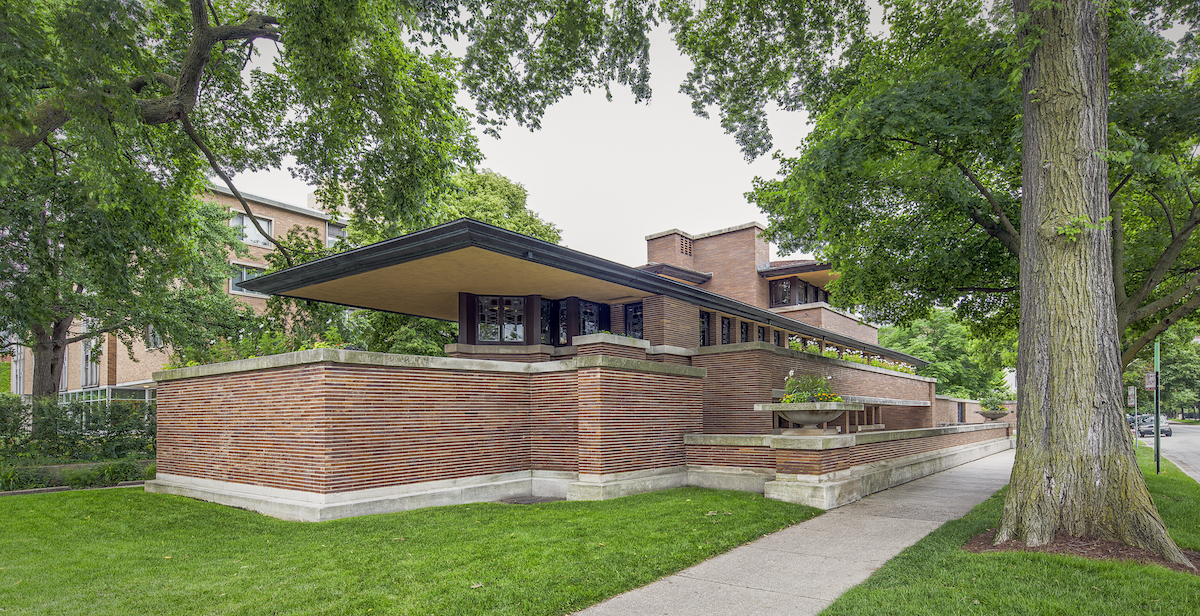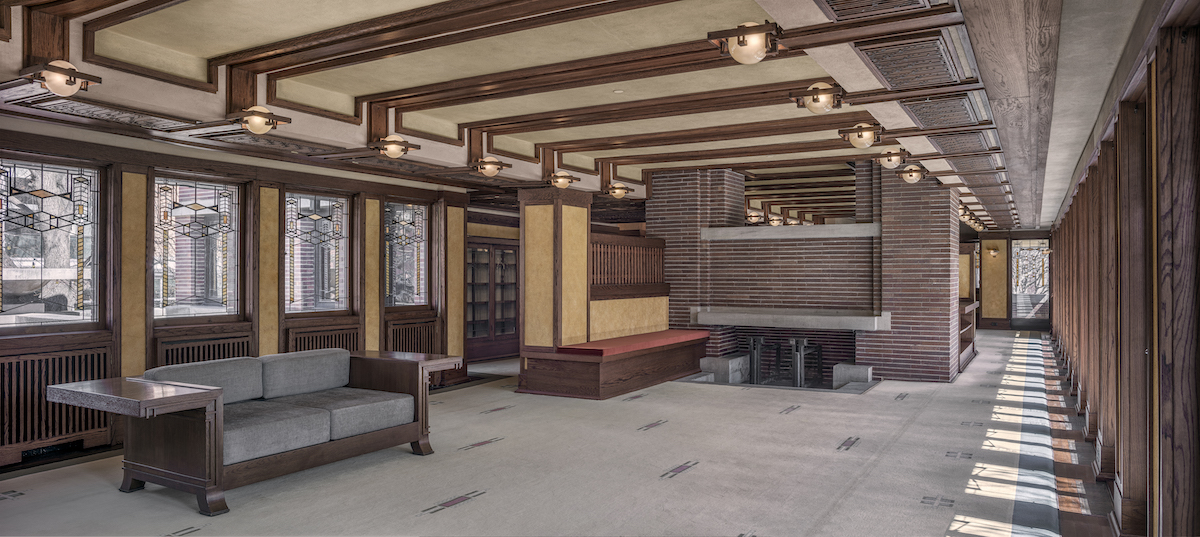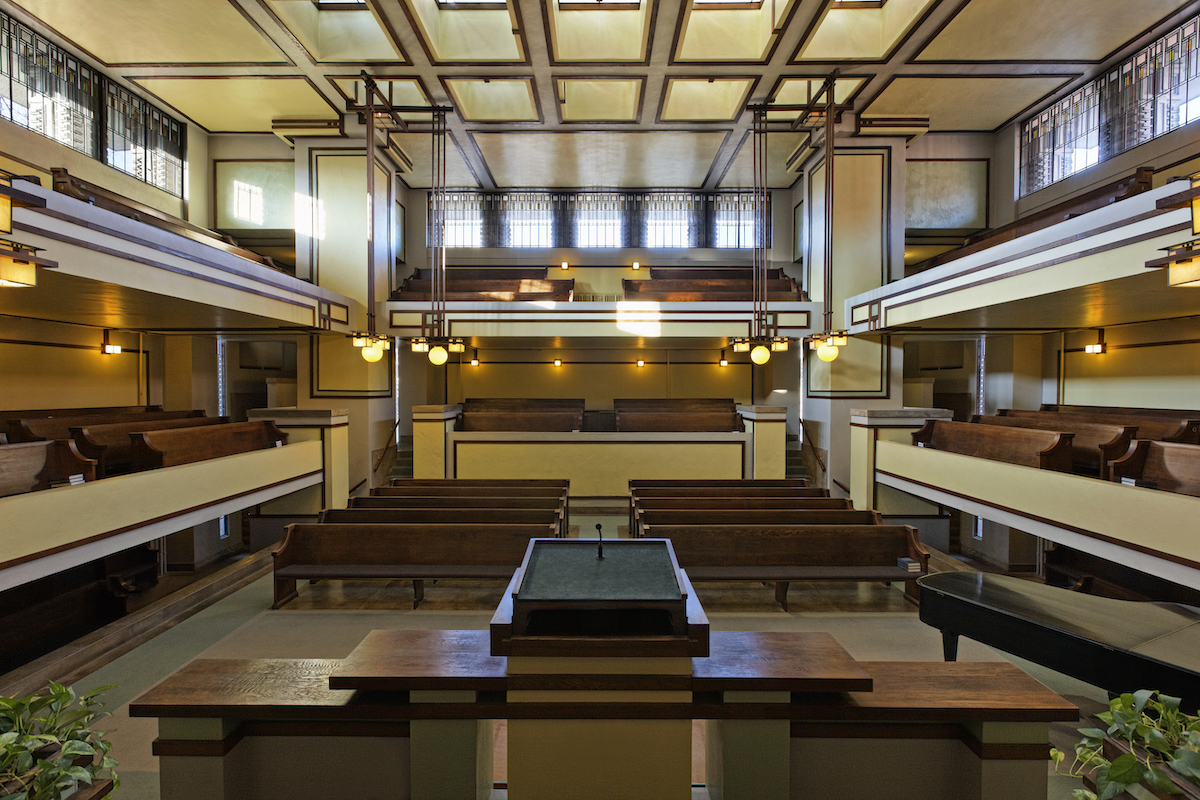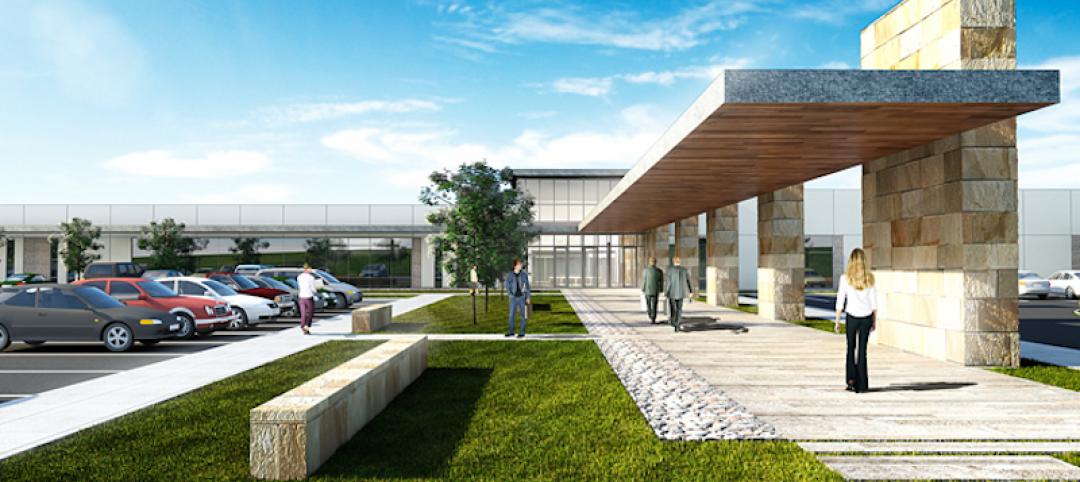During the 43rd session of the World Heritage Committee, currently taking place in Baku, Republic of Azerbaijan (June 30 - July 10, 2019), the World Heritage Committee named eight projects by Frank Lloyd Wright to the UNESCO World Heritage List.
The designation, officially named “The 20th century Architecture of Frank Lloyd Wright,” includes signature works designed by the architect during the first half of the 20th century. They are:
• Aline Barnsdall Hollyhock House (Los Angeles)
• Fallingwater (Mill Run, Pa.)
• Frederick C. Robie House (Chicago)
• Herbert and Katherine Jacobs House (Madison, Wis.)
• Solomon R. Guggenheim Museum (New York)
• Taliesin (Spring Green, Wis.)
• Taliesin West (Scottsdale, Ariz.)
• Unity Temple (Oak Park, Ill.)
On making the selection, the World Heritage Committee stated: “These buildings reflect the ‘organic architecture’ developed by Wright, which includes an open plan, a blurring of the boundaries between exterior and interior, and the unprecedented use of materials such as steel and concrete. Each of these buildings offers innovative solutions to the needs for housing, worship, work or leisure. Wright's work from this period had a strong impact on the development of modern architecture in Europe.”
In Chicago, the UNESCO designation coincides with the Frank Lloyd Wright Trust’s announcement of a new Frank Lloyd Wright Visitor and Education Center. The trust owns and maintains Wright’s Home and Studio in Oak Park, Ill., and operates public tours and programs at five Chicago area historic sites, including Unity Temple (1905-08) and Robie House (1908-10).
“This UNESCO designation firmly establishes Wright’s place on the international stage of modern architecture,” said Celeste Adams, President & CEO of the Frank Lloyd Wright Trust.
Wright joins pioneers of modern architecture already inscribed on the prestigious list, including Gerrit Rietveld, Walter Gropius, Mies van der Rohe, Le Corbusier, Oscar Niemeyer and Lucio Costa. There are more than 1,000 World Heritage sites around the world, and the group of Wright sites is now among 24 sites in the U.S.
 Frederick C. Robie House, Chicago. Photo: Tim Long, courtesy Frank Lloyd Wright Trust
Frederick C. Robie House, Chicago. Photo: Tim Long, courtesy Frank Lloyd Wright Trust
 Frederick C. Robie House, Chicago. Photo: James Caulfield, courtesy Frank Lloyd Wright Trust
Frederick C. Robie House, Chicago. Photo: James Caulfield, courtesy Frank Lloyd Wright Trust
Related Stories
Architects | Nov 11, 2016
Six finalists selected for London’s Illuminated River competition
The competition is searching for the best design for lighting the bridges of central London.
Healthcare Facilities | Nov 10, 2016
Prescription for success: Managing technology in the design of healthcare facilities
While the benefits of intelligently deployed technology are abundantly clear to both designers and healthcare end-users, it’s no simple task to manage the integration of technology into a building program.
Industry Research | Nov 4, 2016
New survey exposes achievement gap between men and women designers
Female architects still feel disadvantaged when it comes to career advancement.
Architects | Nov 2, 2016
NCARB launches ARE 5.0
The newest version of the exam required for an architecture license, ARE 5.0, launched on Nov. 1.
Architects | Oct 24, 2016
Winners of the 2016 AAP American Architecture Prize announced
The AAP recognizes the most outstanding architecture worldwide across three disciplines: architecture, interior design, and landscape architecture.
Architects | Oct 21, 2016
A process of analysis and synthesis gives architects and designers the information they need to create
Sometimes people look only for the simple answer and don’t understand that there is a calculated process to get there, writes HDR’s Lynn Mignola.
Architects | Oct 21, 2016
The AIA Innovation Award Recipients have been selected
The program honors projects that highlight collaboration between design and construction teams to create better process efficiencies and overall costs savings.
Architects | Oct 21, 2016
NASA Orbit Pavilion to debut at The Huntington Library at the end of October
The pavilion uses sound to represent the movement of the International Space Station and 19 earth satellites.
Higher Education | Oct 20, 2016
Designing innovative campuses for tomorrow's students
Planning for places that foster effective innovation is still an emerging process, but the constant pressure on universities to do so continues from two of their key institutional constituencies—students and employers, writes Perkins+Will's Ken Higa and Josh Vel.
Data Centers | Oct 14, 2016
Where data centers meet design
As technology continues to evolve, we have to simultaneously adapt and help our clients think beyond the short term, writes Gensler's Martin Gollwitzer.
















